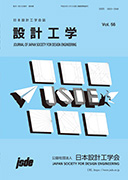
- |<
- <
- 1
- >
- >|
-
Masaki IMAMURA, Kota FUKAYA, Akira MIZOBUCHI2021 Volume 56 Issue 8 Pages 383-394
Published: 2021
Released on J-STAGE: August 05, 2021
Advance online publication: March 16, 2021JOURNAL FREE ACCESSGas cutting is one of the main methods used for cutting steel plates. Gas cutting produces molten steel and it cools down and adheres strongly to the back of the steel. This adhesion is called slag, and it is difficult to remove. In this study, a method of blowing compressed air onto a steel plate in gas cutting to blow away the molten metal, that is, the "Compressed Air Blow Support Method" was conceived. A device for blowing compressed air onto a steel plate was fabricated, and the effects of the blowing direction and input compression pressure on the amount of slag adhering to the steel were investigated. When the compressed air was blown onto the steel plate in the direction perpendicular to the direction of gas cutting, the molten metal stuck to the bottom of the steel plate was blown away and almost no slag adhesion was observed. When the input pressure was changed from 0.1, 0.2 and 0.3 MPa, the amount of slag adhered was large at the highest blowing pressure of 0.3 MPa, and the amount of slag adhered was minimal at 0.2 MPa.
View full abstractDownload PDF (3569K) -
(1st Report, Process Construction and Design Implementation)Yukio YOKOYAMA, Akira MONKAWA, Takashi KIGURE, Satoshi OKUBO2021 Volume 56 Issue 8 Pages 395-412
Published: 2021
Released on J-STAGE: August 05, 2021
Advance online publication: April 14, 2021JOURNAL FREE ACCESSAdditive manufacturing technology is being researched and developed not only for prototyping but also for various application areas. Authors have been researching additive manufactured violin. In this report, the authors defined four design goals for the additive manufactured violin. Then, a process of design, manufacturing, and evaluation to achieve the design goals was built. 3D scanning, 3D-CAD, and CAE were used in the process. Several parts of the process were implemented, and a 3D-CAD model of a violin was created. The authors have found one of design configurations of the additive manufactured violin that may achieve the four design goals using the 3D-CAD model.
View full abstractDownload PDF (6162K) -
(2nd Report, Implementation of Fabrication and Evaluation)Yukio YOKOYAMA, Akira MONKAWA, Takashi KIGURE, Satoshi OKUBO2021 Volume 56 Issue 8 Pages 413-426
Published: 2021
Released on J-STAGE: August 05, 2021
Advance online publication: April 15, 2021JOURNAL FREE ACCESSIn the 1st report, authors defined design goals for additive manufactured violin. A process to achieve the design goals were established. And then authors implemented parts of the process and found one of design configurations of the violin that may achieve the design goals. In this report, the violin based on the design configuration was fabricated using three additive manufacturing systems. The violin was evaluated through parts of the process. As a result, the authors obtained the additive manufactured violin that achieved the design goals.
View full abstractDownload PDF (7916K)
- |<
- <
- 1
- >
- >|